
Browse an alphabetical list of photographs. These historical images portray people, places, and events before, during, and after World War II and the Holocaust.
<< Previous | Displaying results 1626-1650 of 2641 for "Photo" | Next >>
Members of the Storm Troopers (SA) march through the Brandenburg gate. Berlin, Germany, April 8, 1933.
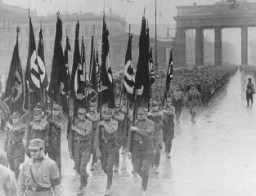
Nazi flags wave above the stadium for the Nazi Party rally grounds in Nuremberg. Architects like Albert Speer constructed monumental edifices in a sterile classical form meant to convey the “enduring grandeur” of the National Socialist movement. Photograph taken in Nuremberg, Germany, between 1934 and 1936.
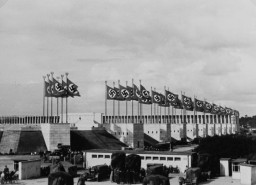
Nazi physician Carl Clauberg, who performed medical experiments on prisoners in Block 10 of the Auschwitz camp. Place and date uncertain.
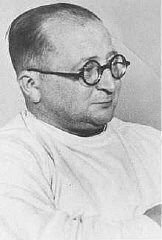
Nazi physician Carl Clauberg (at left), who performed medical experiments on prisoners in Block 10 of the Auschwitz camp. Poland, between 1941 and 1944.
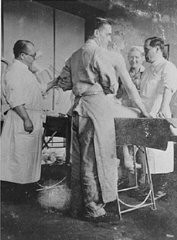
Nazi physician Karl Brandt, director of the Euthanasia Program. August 27, 1942.
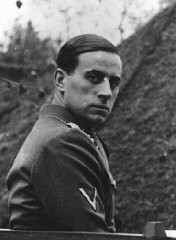
Nazi policy encouraged racially "acceptable" couples to have as many children as possible. Because of the number of children in this Nazi Party official's family, the mother earned the "Mother's Cross." Germany, date uncertain.
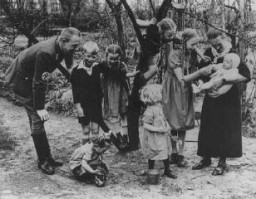
Nazi-produced propaganda slide entitled "Leading Figures of the System." The image was presented during a lecture called "Jewry, Its Blood-based Essence in Past and Future," Part I in a series on Jewry, Freemasonry, and Bolshevism. Germany, circa 1936. The slide features the portraits of six prominent Jewish political and cultural figures in Weimar Germany. Georg Bernhard, Rudolf Hilferding, and Walther Rathenau were among the authors whose works were targeted during the 1933 Nazi book burnings.
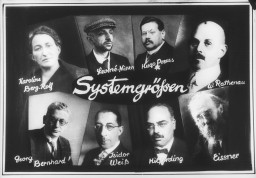
Modern techniques of propaganda—including strong images and simple messages—helped propel Austrian-born Adolf Hitler from being a little known extremist to a leading candidate in the 1932 German presidential elections. The style of this poster is similar to some of film stars of the era. Election poster, 1932; photo by Heinrich Hoffmann
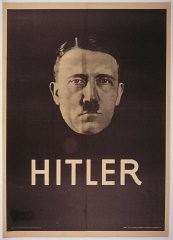
Nazi propaganda poster for 1932 elections, declaring Adolf Hitler to be the last hope of impoverished Germans.

The cover of a Nazi publication on race, Neues Volk (New People), portrays motherhood with this ideal image of an "Aryan" mother and child. Germany, September 1937.

Nazi propaganda postcard showing a crowd of saluting Germans superimposed on an enlarged image of Adolf Hitler with a member of the SA (Storm Trooper) who holds a swastika flag. Munich, Germany, ca. 1932.
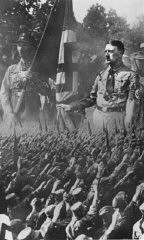
Nazi propaganda poster warning Germans about the dangers of east European "subhumans." Germany, date uncertain.
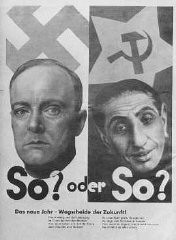
This image shows a 1935 poster by the antisemitic Der Stürmer (Attacker) newspaper. The poster justifies prohibiting “interracial” relationships between Jews and non-Jews under the Nuremberg Race Laws. Many Germans reported suspicions of the “crime” of interracial relationships to the police. The police needed the public to be their “eyes and ears” in this and other matters. Informers were variously motivated by political beliefs, personal prejudices, the desire to settle petty quarrels, or…
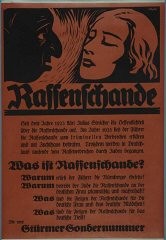
Slide to indoctrinate youth taken from a Nazi propaganda filmstrip. Promoting "euthanasia," it was prepared for the Hitler Youth. The caption says: "Mentally ill Negro (English) 16 years in an institution costing 35,000 RM [Reichsmarks]." Place and date uncertain.
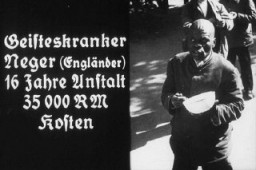
Exhibition of Nazi publications—carefully purged of antisemitic titles—on display during the Berlin Olympics. The poster shows countries in which Hitler's Mein Kampf had been translated into the native language. Berlin, Germany, August 1936.
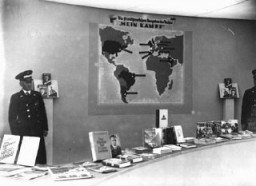
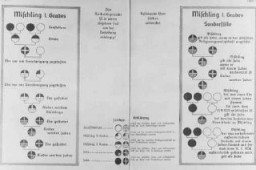
Nazi propaganda depicting two racial portraits of individuals considered non-Aryan. The original caption reads: "Then these are barely recognizable as human beings." Circa 1933–1943.
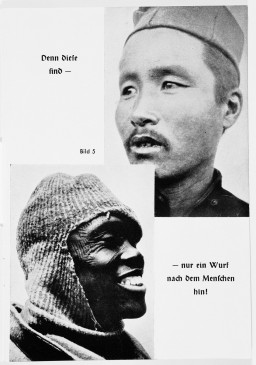
Nazi Storm Troopers (SA) block the entrance to a trade union building that they have occupied. SA detachments occupied union offices nationwide, forcing the dissolution of the unions. Berlin, Germany, May 2, 1933.
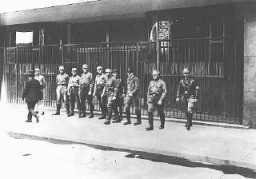
Members of the SA enter Danzig in 1939. Germany annexed most of western Poland and Danzig within weeks of the German invasion of Poland.
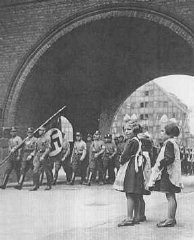
Nazis block Jews from entering the University of Vienna. Austria, 1938.
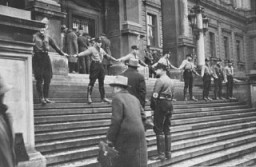
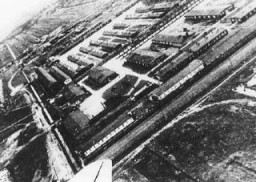
British Prime Minister Neville Chamberlain addresses a crowd at the Heston Aerodrome on September 30, 1938. He has just returned from signing the Munich Agreement with Germany, Italy, and France. Chamberlain will later deliver a statement at the prime minister’s residence at 10 Downing Street, where he famously proclaims, “I believe it is peace for our time.” IWM (HU 4255)
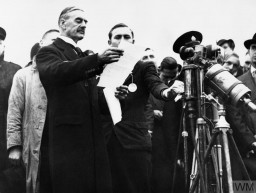
Front page of a newspaper from Landsberg displaced persons camp. Germany, November 15, 1945.
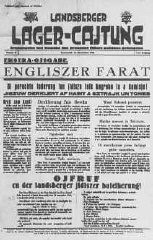
An American correspondent reads a special edition of the Nürnberger newspaper reporting the sentences handed down by the International Military Tribunal. Nuremberg, Germany, October 1, 1946.
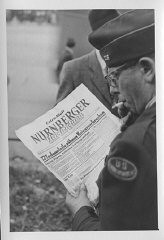
A family of nomadic Roma (Gypsies) in front of their wagon. Czechoslovakia, 1939.
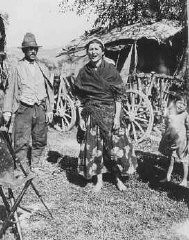
We would like to thank Crown Family Philanthropies, Abe and Ida Cooper Foundation, the Claims Conference, EVZ, and BMF for supporting the ongoing work to create content and resources for the Holocaust Encyclopedia. View the list of donor acknowledgement.